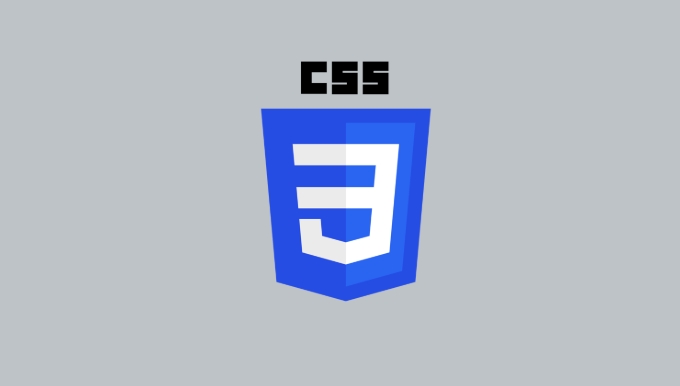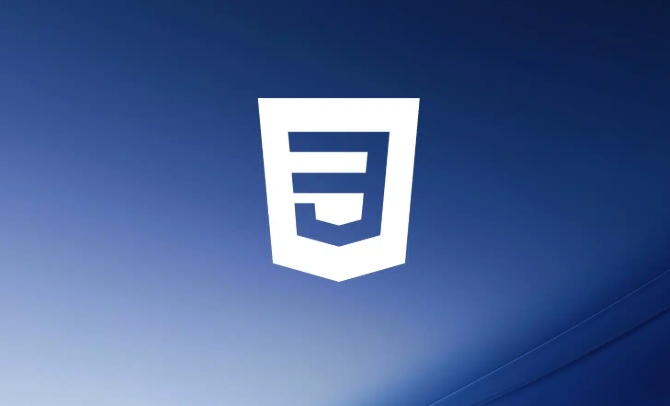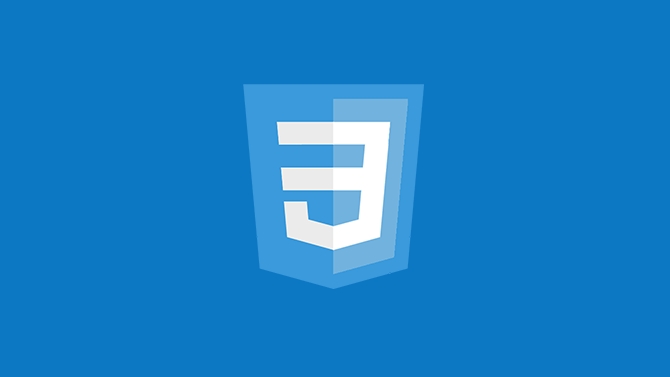CSS variables improve the neatness and maintenance of the code by storing reusable values ??and achieving one modification and multiple modifications. Its core role is to simplify stylesheet management and support dynamic updates and local scope control. When using it, you need to define variables with the -- prefix, call them through the var() function, pay attention to naming specifications and scope division, and be wary of spelling errors and compatibility issues. The specific points are as follows: 1. Use --prefix to define variables, usually declare global variables in: root; 2. Reference variables through the var() function; 3. Any CSS value such as color, size, shadow, etc. can be stored; 4. Local variables should be defined in a specific selector to avoid conflicts; 5. Dynamic updates can be achieved through JavaScript or media queries; 6. Pay attention to spell checking, inheritance behavior and browser compatibility issues. The rational use of CSS variables can significantly improve development efficiency and code maintainability.

Using CSS variables (also known as custom properties) can make your stylesheets cleaner, more maintainable, and easier to update. They let you store reusable values—like colors, font sizes, spacing—and change them in one place instead of hunting through your code.

What Are CSS Variables?
CSS variables are defined using the -- prefix inside a selector, usually :root for global scope. You access them with the var() function.

:root {
--primary-color: #007bff;
--spacing: 1rem;
}Then use them like this:
.button {
background-color: var(--primary-color);
padding: var(--spacing);
}They're not just for colors—you can store anything: sizes, shadows, font stacks, even complex gradients.

How to Scope Variables Locally
By default, defining variables on :root makes them globally available. But sometimes you want variables that only apply in certain parts of the site—like a dark theme or a specific component.
Just define them on a selector:
.card {
--bg-color: #f8f8f8;
background-color: var(--bg-color);
} Now, only elements under .card will see that value. This helps avoid naming conflicts and keeps things modular.
Tips:
- Use meaningful names (
--header-padding, not--p1) - Keep local variables tightly scoped
- Don't overdo it—some values ??are fine being hard-coded
Updating Variables Dynamically
One of the big wins with CSS variables is being able to change them at runtime—say, switching themes or adjusting layout based on user input.
You can do this in JavaScript:
document.documentElement.style.setProperty('--primary-color', '#ff0000');
Or with media queries:
@media (max-width: 600px) {
:root {
--spacing: 0.5rem;
}
}This flexibility makes responsive design and theming easier without needing extra classes or preprocessors.
Common Pitfalls and Gotchas
Even though CSS variables are powerful, there are a few things to watch out for:
- No fallback if misspelled : If you typo a variable name, like
var(--primry-color), it won't work and won't warn you. - Cascading behavior matters : Variables inherit like normal properties, so changing a parent's variable affects children.
- Old browser support : Most modern browsers support them, but not IE11.
To stay safe:
- Double-check variable names
- Use fallbacks when needed:
color: var(--text-color, black); - Consider tools like PostCSS if you need broader compatibility
That's the core of working with CSS variables. They're not complicated, but they do require attention to naming and scope. Once you get used to them, you'll probably wonder how you ever managed without.
The above is the detailed content of CSS tutorial on variables and custom properties. For more information, please follow other related articles on the PHP Chinese website!

Hot AI Tools

Undress AI Tool
Undress images for free

Undresser.AI Undress
AI-powered app for creating realistic nude photos

AI Clothes Remover
Online AI tool for removing clothes from photos.

Clothoff.io
AI clothes remover

Video Face Swap
Swap faces in any video effortlessly with our completely free AI face swap tool!

Hot Article

Hot Tools

Notepad++7.3.1
Easy-to-use and free code editor

SublimeText3 Chinese version
Chinese version, very easy to use

Zend Studio 13.0.1
Powerful PHP integrated development environment

Dreamweaver CS6
Visual web development tools

SublimeText3 Mac version
God-level code editing software (SublimeText3)

Hot Topics
 What is 'render-blocking CSS'?
Jun 24, 2025 am 12:42 AM
What is 'render-blocking CSS'?
Jun 24, 2025 am 12:42 AM
CSS blocks page rendering because browsers view inline and external CSS as key resources by default, especially with imported stylesheets, header large amounts of inline CSS, and unoptimized media query styles. 1. Extract critical CSS and embed it into HTML; 2. Delay loading non-critical CSS through JavaScript; 3. Use media attributes to optimize loading such as print styles; 4. Compress and merge CSS to reduce requests. It is recommended to use tools to extract key CSS, combine rel="preload" asynchronous loading, and use media delayed loading reasonably to avoid excessive splitting and complex script control.
 External vs. Internal CSS: What's the Best Approach?
Jun 20, 2025 am 12:45 AM
External vs. Internal CSS: What's the Best Approach?
Jun 20, 2025 am 12:45 AM
ThebestapproachforCSSdependsontheproject'sspecificneeds.Forlargerprojects,externalCSSisbetterduetomaintainabilityandreusability;forsmallerprojectsorsingle-pageapplications,internalCSSmightbemoresuitable.It'scrucialtobalanceprojectsize,performanceneed
 Does my CSS must be on lower case?
Jun 19, 2025 am 12:29 AM
Does my CSS must be on lower case?
Jun 19, 2025 am 12:29 AM
No,CSSdoesnothavetobeinlowercase.However,usinglowercaseisrecommendedfor:1)Consistencyandreadability,2)Avoidingerrorsinrelatedtechnologies,3)Potentialperformancebenefits,and4)Improvedcollaborationwithinteams.
 CSS Case Sensitivity: Understanding What Matters
Jun 20, 2025 am 12:09 AM
CSS Case Sensitivity: Understanding What Matters
Jun 20, 2025 am 12:09 AM
CSSismostlycase-insensitive,butURLsandfontfamilynamesarecase-sensitive.1)Propertiesandvalueslikecolor:red;arenotcase-sensitive.2)URLsmustmatchtheserver'scase,e.g.,/images/Logo.png.3)Fontfamilynameslike'OpenSans'mustbeexact.
 What is Autoprefixer and how does it work?
Jul 02, 2025 am 01:15 AM
What is Autoprefixer and how does it work?
Jul 02, 2025 am 01:15 AM
Autoprefixer is a tool that automatically adds vendor prefixes to CSS attributes based on the target browser scope. 1. It solves the problem of manually maintaining prefixes with errors; 2. Work through the PostCSS plug-in form, parse CSS, analyze attributes that need to be prefixed, and generate code according to configuration; 3. The usage steps include installing plug-ins, setting browserslist, and enabling them in the build process; 4. Notes include not manually adding prefixes, keeping configuration updates, prefixes not all attributes, and it is recommended to use them with the preprocessor.
 What are CSS counters?
Jun 19, 2025 am 12:34 AM
What are CSS counters?
Jun 19, 2025 am 12:34 AM
CSScounterscanautomaticallynumbersectionsandlists.1)Usecounter-resettoinitialize,counter-incrementtoincrease,andcounter()orcounters()todisplayvalues.2)CombinewithJavaScriptfordynamiccontenttoensureaccurateupdates.
 CSS: When Does Case Matter (and When Doesn't)?
Jun 19, 2025 am 12:27 AM
CSS: When Does Case Matter (and When Doesn't)?
Jun 19, 2025 am 12:27 AM
In CSS, selector and attribute names are case-sensitive, while values, named colors, URLs, and custom attributes are case-sensitive. 1. The selector and attribute names are case-insensitive, such as background-color and background-Color are the same. 2. The hexadecimal color in the value is case-sensitive, but the named color is case-sensitive, such as red and Red is invalid. 3. URLs are case sensitive and may cause file loading problems. 4. Custom properties (variables) are case sensitive, and you need to pay attention to the consistency of case when using them.
 What is the conic-gradient() function?
Jul 01, 2025 am 01:16 AM
What is the conic-gradient() function?
Jul 01, 2025 am 01:16 AM
Theconic-gradient()functioninCSScreatescirculargradientsthatrotatecolorstopsaroundacentralpoint.1.Itisidealforpiecharts,progressindicators,colorwheels,anddecorativebackgrounds.2.Itworksbydefiningcolorstopsatspecificangles,optionallystartingfromadefin






